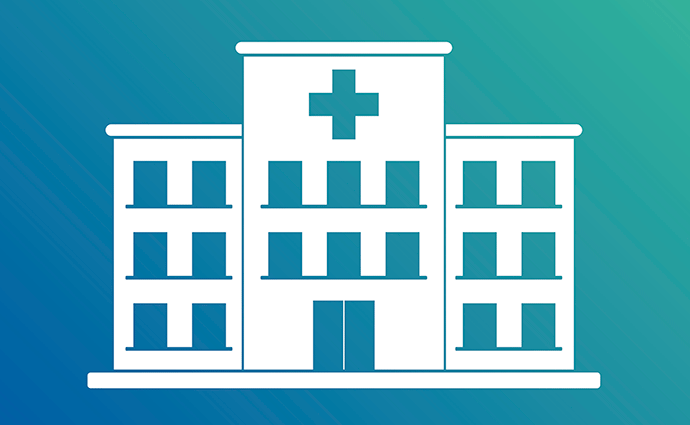Top 3 Tech Challenges In Healthcare & How Managed IT Services Help
It goes without saying that the prime goal of the healthcare industry is to provide care for people and while a good bedside manner is essential, the industry would grind to a halt without technology.
Whether in the operating room, the emergency department, billing, primary care, urgent care, or any other part of the healthcare industry, technology plays a key role in keeping information safe, available, and moving efficiently.
In this article, we’ll explore three common technology challenges that pertain to the healthcare industry and directly impact the quality of care, data safety, and operational efficiency.
And, whether you work in healthcare or in another industry, this article will provide valuable information you can use because some of the same challenges pertain to other industries as well.
At Kelser, we provide managed IT services to clients from various industries including health care. Don’t worry though, we aren’t here to convince you to work with us, but to provide information so that you can choose the best technology options for your organization.
What Are The 3 Top Technology Challenges Facing The Healthcare Industry?
While the healthcare industry is not completely unique in its technology challenges, the three common ones are:
1. Regulatory compliance
2. Cybersecurity threats
3. Data management
Some of these technology issues pertain to other industries as well.
How Managed IT Services Help Ensure Regulatory Compliance
Navigating all the regulatory and compliance requirements is a primary concern for healthcare organizations. Here are some of the regulatory requirements for providers:
-
HIPAA
Most people are familiar with the Health Insurance Portability and Accountability Act (HIPAA) from their visits to healthcare providers. Signed into law in 1996, it is designed to provide standards for the electronic exchange, privacy, and security of health information.
-
HITECH
The Health Information Technology For Economic and Clinical (HITECH) Act was signed into law in 2009 to promote the adoption and meaningful use of health information technology.
Both federal and state privacy laws continue to evolve. Non-compliance can result in substantial fines, unintended release of patient information, reputational harm, lack of patient trust, and legal ramifications.
Compounding this challenge is the shortage of talent, expense of skilled staff, and the variety of technology expertise required to maintain complex IT infrastructures, which can make it difficult to stay ahead of regulatory changes and implement robust compliance measures.
Managed IT services provide proactive care for healthcare networks helping ensure that systems and devices are up-to-date and comply with the latest regulations.
In addition, managed IT services make sure that healthcare organizations have access to the full complement of technology experts their infrastructures require. And, because the cost of the experts is shared, customers don’t bear the full financial burden.
How Managed IT Services Help Combat Cybersecurity Threats
The constant rise of cyber threats poses a significant risk to healthcare organizations, given the sensitivity of the patient information they safeguard.
Medical records and financial data are prime targets for cyber criminals and can lead to identity theft and financial losses.
Cyber incidents, such as ransomware attacks, have the capacity to cripple critical systems, disrupt operations, and inflict substantial financial losses.
Moreover, the aftermath of data breaches can tarnish an organization's reputation and undermine patient trust.
One of the many ways managed IT services help with these issues is by providing proactive monitoring, maintenance, and service for the entire technology infrastructure. This makes it possible to identify unauthorized access and quickly respond to security incidents.
In addition, managed IT service providers offer your staff members with regularly scheduled security awareness training modules. This ongoing exposure to information about the latest threats empowers your employees so they know how to identify and report suspicious activities.
By keeping cybersecurity top of mind for all employees, you engage them as a human firewall to keep your network safe.
Related article: What Is Employee Security Awareness Training? Do I Need It?
As a result, your healthcare technology infrastructure will be less likely to fall victim to outdated systems, inadequate authentication measures, and a lack of cybersecurity awareness training among staff; minimizing the chance that your organization will be susceptible to phishing, social engineering, and other vulnerabilities.
How Managed IT Services Help With Data Management
Data management is a big challenge for healthcare organizations.
Outdated Electronic Health Record (EHR) systems and aging network infrastructure create limitations in storing and sharing data, which can leave your infrastructure open to access by unauthorized users.
Clinicians often struggle to access and share patient information, which results in delayed treatment and inefficient coordination of care. Data silos make things even more complicated.
Managed IT service providers can help organizations develop creative solutions that adhere to regulatory requirements and make daily life easier. The result is a streamlined data management process and enhanced patient care outcomes.
What’s The Bottom Line?
In this article, we’ve explored three top technology challenges healthcare organizations face: regulatory compliance, data management, and cybersecurity threats.
You now have a complete understanding of these challenges and some of the ways managed IT services can help address them.
And, the truth is, whether you work for a healthcare organization or not, your business may face similar challenges.
Managed IT services provide fully comprehensive care for your entire network, but there are options for external IT support depending on your needs. Learn some options for partnering with an external IT service provider.
Not sure if your organization would benefit from managed IT services? Click the button below for a checklist you can use to assess whether it might be a good fit.
Have cybersecurity concerns? Wondering if your cybersecurity measures will be effective against emerging threats? Click the button below for a cybersecurity checklist you can use to identify potential vulnerabilities in your infrastructure.
Prefer to talk through things with a human? (We get it. We feel the same way!) Use the button below to connect with one of our IT solutions experts. Provide your contact information and we’ll reach out to schedule a call to learn about your current technology situation, your pain points, and your technology goals. 





